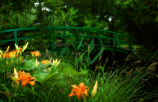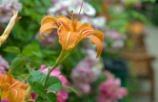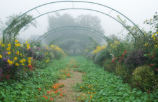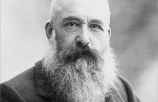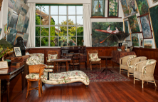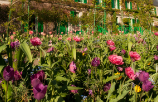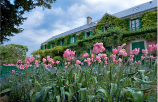House
Japanese prints
While all of Monet’s artworks at Giverny have been moved to Musée Marmottan Monet, fans of art will be happy to know they can still see the artist’s collection of Japanese prints.

Claude Monet’s collection features 46 prints by Kitagawa Utamaro (1753-1806), 23 by Katsushika Hokusai (1760-1849) and 48 by Utagawa Hiroshige (1797-1858), totalling 117 of the 211 on display, with another 32 in storage.
Monet’s passion for Japan led him to unexpectedly introduce various Japanese touches within the utterly unique world he created at Giverny. The features he borrowed from the Japanese art of gardens can be seen in the layout of the pond, which he transformed into a stunning ‘water garden’ (vegetation elements, water lily flowers, etc.). And the bridge spanning this expanse of floral water is reminiscent of the Japanese bridges often depicted in Japanese prints. This illustrates how much the artist shared the vision of ukiyo-e great masters and how familiar he was with their ‘floating world’.
Monet studied those Japanese prints intensely – in as much detail as the feminine faces carved by Utamaro – and he loved them so much he built an amazing collection and displayed them on the walls of his Giverny home. He chose to live surrounded by the outstanding creations of Hokusai, Hiroshige, Utamaro and others. Whether in his garden or in his house, Monet was ‘living in Japan’ in Normandy! While the painter of ‘Impression, Sunrise’ never lived in the Land of the Rising Sun, he happily hosted and became friends with visiting Japanese buyers and collectors. This led to letters being written and prints posted to further grow his lovingly-built collection displayed at Giverny for the enjoyment of his guests.


